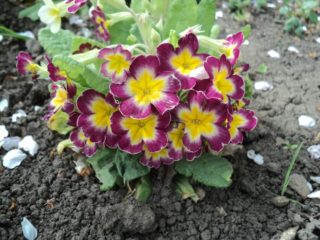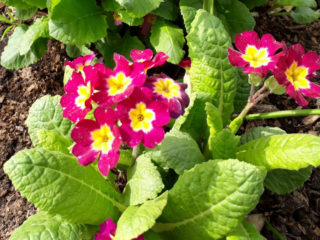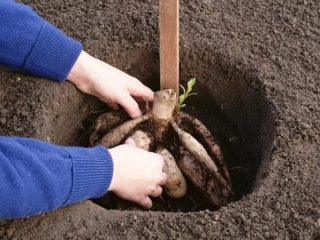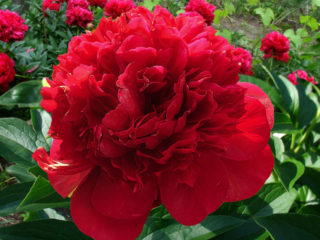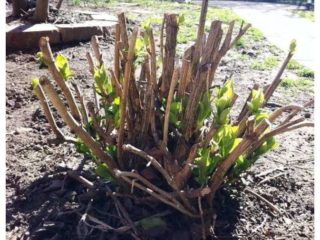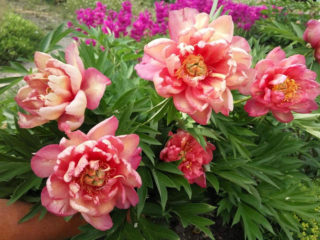Content
Growing primrose from seeds is a long and labor-intensive process. A successful result requires careful preparation of planting material and soil, and proper care of seedlings. Tips for growing primrose from seeds will help eliminate common mistakes among novice gardeners. Following the recommendations will allow you to get a beautiful and healthy ornamental plant.
Features of growing primrose from seeds
This plant is popularly called primrose, which is associated with early flowering. It may occur at the end of March or at the beginning of April. Some varieties bloom in spring and summer.
It is usually recommended to plant primrose seeds for seedlings in cases where it is impossible to obtain other planting material. Most often, the flower is propagated by dividing into rosettes, each of which is planted separately.But this method is only relevant if there is a mother plant. To grow and propagate a new variety, you will need pre-prepared seeds.
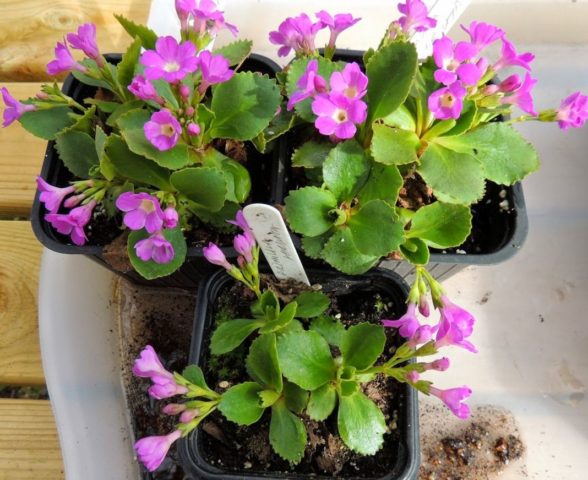
Primrose also grows well in open ground
When growing seedlings, you should not expect rapid flowering. It will occur no earlier than 5 months after germination. Crops require specific care. It includes an extensive range of activities.
How to plant primrose seeds at home
The method of cultivation depends on several factors. The main one is the source of planting material. To grow primroses, use seeds collected independently or purchased from garden supply stores.
When to sow primrose for seedlings
If the seeds were purchased in a store, they must be planted within the time period specified in the attached instructions. For most varieties of primrose, seedlings are grown in February.

Seed germination is different for different types of primroses
Experienced gardeners sow seeds in January. According to the lunar calendar, favorable days are 5-9, 12, 21, 22. In February, planting primrose seeds for seedlings is best done on the 11-18th.
Preparing containers
To grow primrose, do not use any convenient container. This requires a container 5-7 cm high. A prerequisite is the presence of drainage holes.
Suitable for sowing and growing:
- flower pots;
- small plastic glasses;
- separate containers;
- seedling cassettes;
- peat tablets.

You can plant seeds in a common box or small flower pot.
Cut plastic bottles, dairy containers or plastic bags are not suitable for growing primrose seeds. The use of containers made from such materials reduces germination due to the negative impact on soil quality.
Soil preparation
The quality of the soil mixture is the most important factor affecting the germination of planting material. To grow primrose from seeds, you will need fertile garden soil. The soil should be loose and moderately moist.
When planting, you can use a ready-made substrate for indoor plants. It is also made independently from several components.
You will need:
- leaf humus;
- turf land;
- river sand.
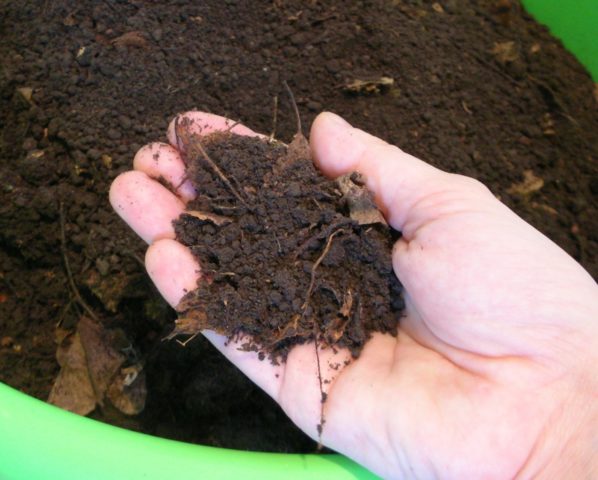
To plant seeds, you can buy ready-made soil in a specialized store.
It is recommended to sterilize the self-made soil mixture for growing. This eliminates the risk of fungi and bacteria that can harm the plant. The easiest way to sterilize soil is in the oven. The substrate is poured onto a baking sheet in a layer of no more than 1.5 cm and left at a temperature of 120 degrees for 45 minutes.
Preparing primrose seeds for sowing
Planting material needs disinfection. Before sowing primrose seeds, they are dipped in a one percent solution of potassium permanganate. 20 minutes are enough for disinfection. After this, the seeds should be spread out on a clean cloth or sheet of paper. So they are left for 30-40 minutes to dry.
How to stratify primrose seeds
For most varieties, this procedure is required. Without preliminary stratification, seeds may not germinate.The procedure involves creating climatic conditions corresponding to the beginning of the growing season, that is, early spring. Thus, the seeds are exposed to low temperatures so as not to disturb the biological rhythm of the plant.
You can stratify primrose seeds at home in different ways. Classic technology involves short-term storage of planting material in a room and a further decrease in temperature.
Instructions:
- Disinfected seeds are kept in an open container on the windowsill for 2-3 days.
- Planting material is placed in a container with moist soil and placed in the refrigerator.
- Keep the container in a cool place for 2-3 weeks.
- Move the container to the balcony or outside if the temperature is not below 0 degrees.
The container can be stored in the snow. This will ensure optimal temperature and humidity.

Stratification should be carried out before planting, placing ripe seeds in the cold
When stratification is completed, the seeds should be placed in a place that is well lit during the day. It is best to leave the container on the windowsill. During this period, you need to constantly keep the soil moist, but do not water it, but use a sprayer.
Sowing primrose seeds for seedlings
The planting method is very simple if you follow the step-by-step instructions. Also for this purpose, a video about sowing primrose seedlings can help:
Main stages of planting:
- Fill the container with substrate.
- Make shallow holes.
- Place the seeds in the hole.
- Spray the soil with a spray bottle.
- Cover the container with a lid or film.
There is no need to cover the sown seeds with soil, otherwise they will not germinate.The described planting method is relevant regardless of whether stratification is carried out or not.
How to grow primrose seedlings from seeds
In order for the planting material to sprout after sowing, proper care is needed. Auxiliary procedures are also required to ensure that primrose seedlings from seeds at home are resistant to adverse factors and insensitive to diseases.
Microclimate
The optimal temperature for germination is 16-18 degrees. Hybrid primrose varieties need good lighting. Containers with crops are placed in a bright place. This requires light-diffusing screens that will protect the seedlings from direct sunlight. Seedlings of fine-toothed primrose seeds should be kept in the shade.

Some varieties of primrose need diffused light and a temperature of +18 degrees
Another important trick for sowing primrose seeds for seedlings is that the container needs to be regularly ventilated. Before the first shoots appear, the container is opened for 30 minutes. When the first shoots appear, the ventilation period is gradually increased. The lid or film can be completely removed after 12-14 days.
Picking
When growing primrose from seeds at home, this procedure is carried out when 2-3 leaves appear on the seedlings. During this period, the root system is actively developing and needs space. Therefore, the sprouts are carefully removed from the substrate and moved to another container with nutrient soil.
Picking scheme:
- 1 hour before the procedure, water the seedlings.
- Place drainage at the bottom of the new container and fill it with soil.
- Press a shallow hole in the soil.
- Pour some warm water into it.
- Remove the sprout with a wooden spatula or plastic spoon.
- Place the seedling in the hole.
- Spray with a spray bottle.
After the procedure, the container is placed in partial shade for 1 week. Picking is carried out 2-3 times before planting in the ground.
Watering and fertilizing
Before emergence, the soil is sprayed with a spray bottle. In the future, periodic moderate watering is required. The soil should not be too wet or too dry.
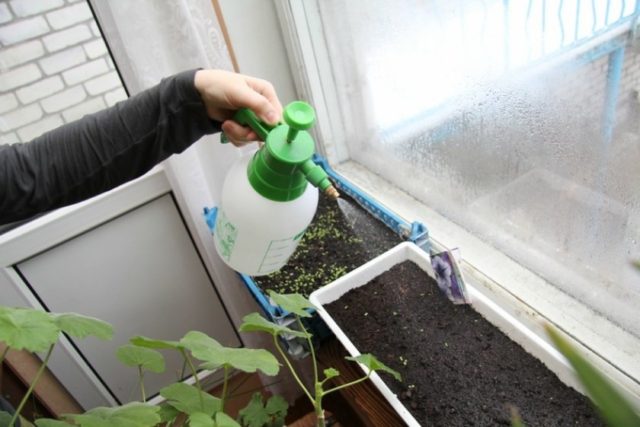
You can spray with a fine spray
Mineral fertilizers for indoor plants are used for feeding. Use diluted, low concentrated liquid solutions. Fertilizing is carried out once a week before transplanting into open soil.
Hardening
Primrose is a plant that is well adapted to low temperatures. Therefore, there is no need to harden off the crops. They can be taken outside if the temperature is above 10 degrees. Then the seedlings quickly adapt to external conditions and tolerate planting better.
Transplantation into the ground
Seedlings are planted in open soil in spring or autumn. The first option is considered optimal, as it allows the plant to adapt to climatic conditions. Autumn planting is recommended if the seedlings are grown from seeds obtained from their own plants in the summer.

Transplantation should be carried out when there is no longer a threat of night frosts.
Primroses are planted in places with fertile soil, protected from direct sunlight. The distance between the bushes is 20-30 cm. After planting, abundant watering is needed, which is reduced when the plants resume active growth.
When will primrose grown from seeds bloom?
The flowering period depends on the characteristics of the variety and planting method.As a rule, primroses bloom 5-6 months after sowing. This period is increased if transplantation into open ground was carried out in the fall. After wintering, the plants bloom in March-April, subject to persistent warming.
How to collect primrose seeds
You can collect planting material yourself at the end of July or at the beginning of August. During this period, the plants ripen in capsules containing a large number of seeds. They need to be collected in a small container or paper envelope and placed in a cool place.
During long-term storage, planting material must be regularly ventilated. It must be protected from direct sunlight and moisture.
Conclusion
Tips for growing primrose from seeds will be useful for both beginners and experienced gardeners. This is important, since sowing seedlings and caring for them can cause a lot of difficulties. Therefore, growing primroses with seeds should be carried out in accordance with the instructions and recommendations of specialists.


